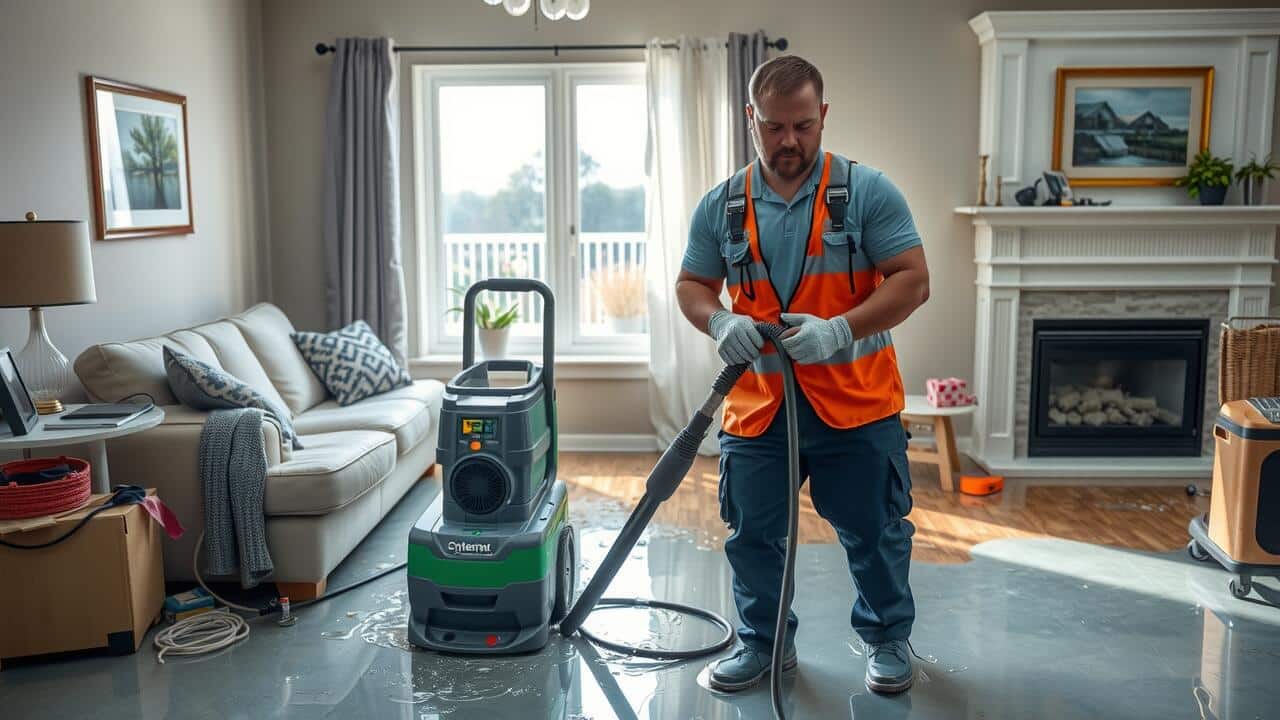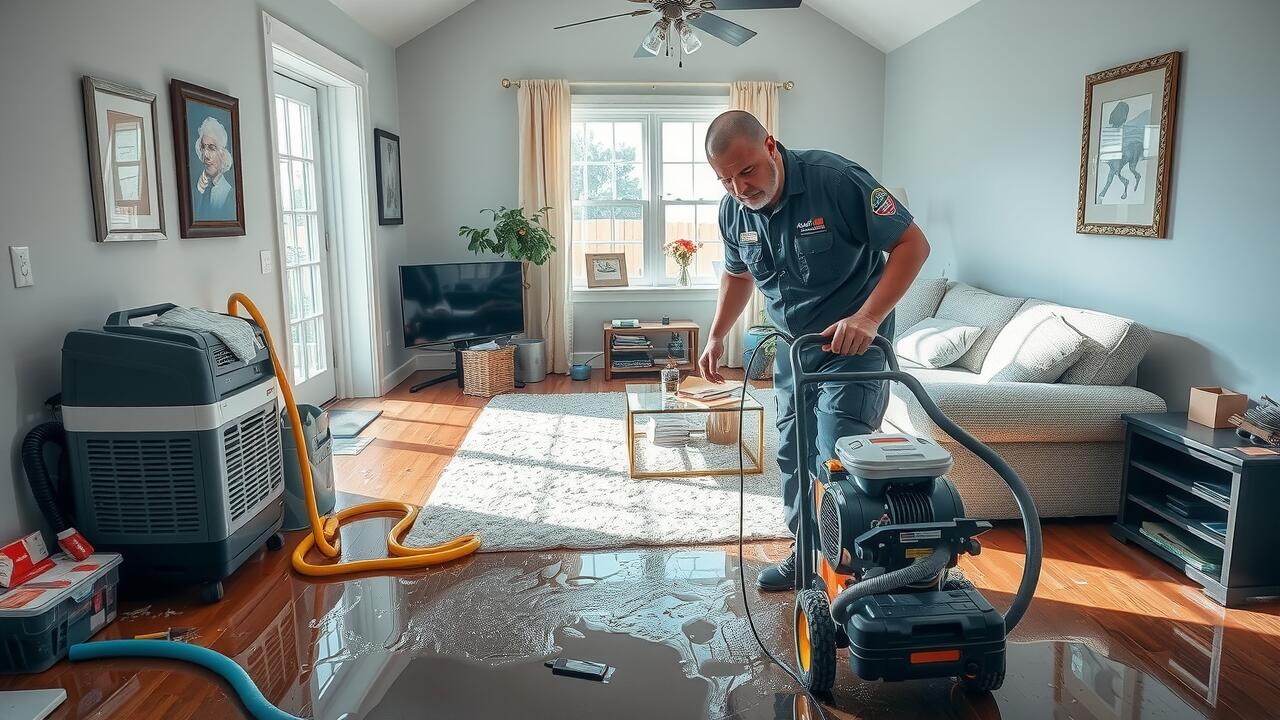
At One Step Air Duct Cleaning Dallas, we understand that flood damage can be both overwhelming and devastating for your home or business. Our flood damage restoration service is designed to help you recover quickly and efficiently from water intrusion. Our expert team utilizes state-of-the-art equipment and techniques to assess the extent of the damage, extract excess water, and thoroughly dry the affected areas. We also focus on cleaning and sanitizing air ducts to prevent mold growth and ensure your indoor air quality remains safe and healthy. With our commitment to prompt and professional service, we are dedicated to restoring your space to its original condition, so you can breathe easy and get back to your normal routine.
Mold Remediation Strategies
Flooding can lead to significant mold growth if not addressed promptly. Effective mold remediation begins with thorough water extraction and drying, which reduces humidity levels and creates an environment less conducive to mold proliferation. Technicians often employ industrial dehumidifiers and fans to facilitate this process, ensuring that materials like drywall, carpets, and insulation are dried completely. Regular inspections are crucial post-flood, allowing for the identification of hidden leaks or areas where moisture may linger, setting the stage for potential mold issues.
In addition to drying, applying anti-fungal treatments can help combat any existing spores and prevent future growth. Cleaning contaminated items, such as furniture and personal belongings, is essential, as bacteria and mildew can compromise indoor air quality. After the initial mitigation steps, reconstruction of affected areas might be necessary. This includes replacing water-damaged floorboards and ceilings. Utilizing quality materials ensures not only a structurally sound restoration but also minimizes the risk of future contamination.
Preventing Mold Growth After Flooding
After a flood, timely action is essential to prevent mold growth in affected areas. Homeowners should begin by removing any standing water as quickly as possible. Using submersible pumps can expedite the removal process, allowing restoration efforts to start without delay. Ensure that plumbing fixtures such as sinks and toilets are thoroughly checked for leaks. Proper ventilation is also crucial, so opening windows and utilizing fans can help reduce humidity levels indoors. Items like upholstery and cotton materials should be dried promptly, as moisture can encourage mold growth.
Taking additional preventive measures can further protect your home from mold infestations following a natural disaster. Cleaning and sanitizing affected surfaces with antimicrobial solutions will reduce the risk of mold spores taking hold. It is important to monitor building components such as shingles, tile, and joists for signs of water damage. Homeowners may also benefit from professional assessments of indoor air quality, especially if they are experiencing health hazards related to mold exposure. Maintaining an inventory of items that were affected can help during the recovery process and provide valuable information when working with insurance policies.
Structural Repairs and Recovery
Following a flood, assessing structural damage becomes a crucial part of the recovery process. Various building materials may suffer from water contamination, leading to issues such as mold growth and corrosion. Common materials affected include lumber and masonry, which can bow or deteriorate when exposed to prolonged moisture. It’s essential to use tools like moisture meters to evaluate levels of saturation in these materials. For structural integrity, you might need to replace compromised beams or walls and ensure that cement supports are intact. Manufacturers can provide safety guidelines that follow OSHA standards to help keep workers protected during these repairs.
Delays in the recovery process can escalate costs and complicate insurance claims. Homeowners should keep detailed documentation of their damage, including photographs and notes on specific areas needing repair. Engaging with a reliable service provider, such as Stanley Steemer or another remediation expert, often proves beneficial. This type of investment not only addresses issues stemming from floodwaters but may also prevent further complications that affect health and safety, such as the proliferation of pathogens. Having a strategic plan in place allows for a more efficient recovery, easing concerns around sanitation while mitigating future risks associated with moisture and rust.
Common Repairs Needed After Water Damage
Water damage can lead to a variety of necessary repairs, depending on the severity of the incident. Commonly, bathtubs, washing machines, and other appliances may require replacement if they are compromised by moisture or contaminated with gray water. Structural components like sheetrock and wallboard often need to be removed and replaced, especially if they have absorbed excessive moisture. It’s essential to address any signs of rust on metal fixtures to prevent further corrosion, which can weaken the integrity of a home.
Signs of damage may also extend to flooring and electrical systems, necessitating immediate attention. If water penetrates electrical wiring, the risk of electrocution increases. Inspections should include moisture meters to detect hidden dampness in confined spaces such as crawl spaces. Ensuring high indoor air quality (IAQ) post-flooding is vital, and this might involve replacing mattresses or using specialized technologies for remediation. Homeowners should be prepared for potential costs related to these repairs and consider the impact on their budget.
Working with Insurance Companies
Navigating the complexities of homeowner insurance after a flood can be daunting. Knowing the specifics of your policy is crucial. Many policies provide coverage for property damage caused by water, while certain exclusions may apply depending on the circumstances. Homeowners should have a comprehensive checklist ready to identify what damage is covered, including elements like flooring, electrical outlets, and structural components. Documenting all damages is essential, so taking photographs and keeping records can aid in the claims process. In some instances, consulting a public adjuster might also be beneficial to ensure that you receive a fair settlement.
After filing a claim, communication with the insurance company becomes vital. It’s important to provide timely information and clarify any details they may request throughout the assessment. While dealing with adjustments, having knowledge of biocides and mold remediation strategies could influence the repairs suggested by the insurance adjuster. Clearly understanding the risks associated with prolonged water exposure can facilitate conversations regarding necessary repairs and potential impacts on health, such as increased risks of infections or chronic illnesses. Utilizing air scrubbers and dehumidifiers may be essential in mitigating any post-flood complications, potentially influencing the coverage and support provided by the insurer.
Navigating the Claims Process
After experiencing flood damage, property owners often find themselves navigating the complex insurance claims process. It is essential to thoroughly document the damage with photographs and detailed descriptions. Create an inventory of affected items, including rugs, tiles, and appliances like washing machines and water heaters. This information will be critical when communicating with insurance adjusters. Keeping a record of any emergency services incurred, such as water extraction with wet/dry vacuums or mold remediation, can help reinforce your claim.
Understanding your policy is crucial when submitting claims. Coverage details often vary significantly, including what is considered a “covered peril” and the limits of liability. If your property is part of a disaster zone declared by the Federal Emergency Management Agency (FEMA), additional resources may become available to assist in recovery. Prepare for potential disputes over claims by gathering all relevant documentation and researching any applicable laws or regulations. Engaging with a claims adjuster promptly can facilitate the process, providing clarity and expediting the recovery of necessary funds.
FAQS
What is flood damage restoration?
Flood damage restoration is the process of cleaning up and repairing properties that have been affected by flooding, including removing water, drying out the space, and addressing any structural or mold issues.
How can I prevent mold growth after flooding?
To prevent mold growth after flooding, it’s essential to dry out affected areas within 24-48 hours, use dehumidifiers, ensure good ventilation, and consider applying mold-resistant products.
What are common repairs needed after water damage?
Common repairs needed after water damage include replacing drywall, repairing or replacing flooring, fixing plumbing issues, and addressing electrical systems that may have been compromised.
How do I work with my insurance company for flood damage restoration?
To work with your insurance company, document all damage with photos, keep records of expenses, and provide a detailed inventory of affected items. It’s important to communicate clearly and follow their claims process.
What should I expect during the flood damage restoration process?
During the flood damage restoration process, expect an assessment of the damage, water extraction, drying and dehumidification, mold remediation, and necessary repairs to restore your property to its pre-flood condition.


